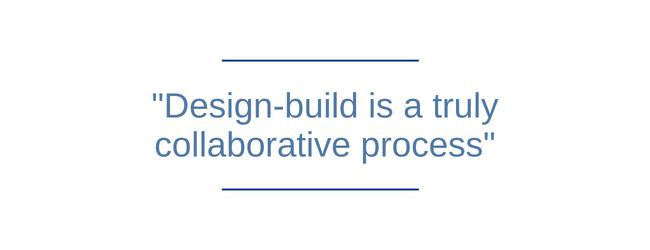
In 1993, design-build was considered a radical approach to project delivery. That year, the Design-Build Institute of America was created by a small group of industry visionaries who believed there was a better way to build. In the three decades since, design-build has become the nation’s fastest-growing delivery method, and DBIA is the nation’s leading source of education, resources and advocacy for Design-Build Done Right®.
Some of the nation’s leading design-build professionals describe how times have changed as DBIA celebrates its 30th anniversary.
Design-build has moved from “alternative” to mainstream, delivering nearly half of all construction spending.
When DBIA was established in 1993, design-build authority at the state level was confined to Virginia. Today, only two states (Iowa and North Dakota) limit agencies’ use of design-build. Research data on the design-build industry’s growth is impressive.

Design-build has seen increased usage in all sectors and regions of the U.S., while the industry has also delivered extraordinary project outcomes and innovation across all sectors. That design-build utilization growth has also spurred DBIA’s development and engagement with industry and Owners.
Virginia McAllister is the CEO of Iron Horse Architects in Denver and a long-time design-build advocate. She says market and performance research has helped drive DBIA’s project success mission. “One of the reasons I love DBIA is that everything’s founded in good math and research. Our best practices come from looking at what makes the best project and the best results. Then, those best practices are disseminated and taught to make the best teams and the best projects for our clients.”
Innovation is vital to design-build’s success over the years. The same is true for DBIA, where the status quo isn’t an option. Barbara Jackson, consultant and former Director of the Burns School of Real Estate and Construction Management at the University of Denver, says “Over the years, the one thing I know is that DBIA has always taken us to the next level. And that’s what I’ve liked about this organization from the start. There’s been a true transformation to how people deliver projects today.”
Design-build is the fastest-growing and most efficient delivery method in the nation.
What’s driving the growth of design-build nationwide isn’t a mystery.
 Especially when you consider that America’s design-build projects continue to deliver faster and with greater cost and schedule performance reliability than other delivery methods.
Especially when you consider that America’s design-build projects continue to deliver faster and with greater cost and schedule performance reliability than other delivery methods.
Tom Foley, New York City’s Commissioner of the Department of Design & Construction (DDC), says early collaboration is key. “I think that design-build is a truly collaborative process. It’s something that is fair: we share the risk, and we’re all participants in providing greater public infrastructure and amazing public projects.”
For Hensel Phelps’ Corporate Director of Design Services and DBIA Fellow Greg Gidez, that collaboration drives innovation, especially in the use of technology. “Design-Build allows the team to integrate technology right from the project’s inception. And when we can advance the use of technology and integrate it into the process, we can get better value out of it. And that’s what we’re looking for in the design-build delivery — how can we get the most value for the Owners?”
Design-build has delivered a “mental shift” in the industry — taking us from silos and adversarial relationships to collaboration and teamwork for mutual success.
Delivering a successful design-build project requires much more than just a single source contract. DBIA Fellow Craig Unger is among the nation’s design-build leaders, and he tells industry and Owners that making the mental shift to true collaboration is essential to their success. “Design Build, as much as it is project delivery, most of us have acknowledged it’s really a mindset.”
DBIA’s mission over the decades has been to define and teach design-build best practices or “Design-Build Done Right®” to help teams make that mental shift. “There are so many folks out there claiming that they’re doing design-build, and it’s really not the right process,” says Morris Aldridge, Executive Director of Planning & Construction at Tacoma Public Schools. “So, educating contractors, architects and Owners is the most important piece.” Gidez adds, “Design-build done wrong is bad for the industry. DBIA teaches how we do ‘Design-Build Done Right.’ And that’s very important for the success of projects.”
Design-build collaboration maximizes technology and innovation to deliver the resilience, sustainability and diversity goals important to today’s Owners.
In today’s historic infrastructure era, Owners are looking for additional results beyond just cost and schedule. Teams need the flexibility design-build provides to deliver triple-bottom-line results. Keith Molenaar, PhD, is the Dean of the College of Engineering and Applied Science at the University of Colorado Boulder and a research analyst on the most recent CII/Pankow design-build performance study. Molenaar says, “Design-build has been proven over and over again to deliver projects faster, at less cost. But, you know, when we start to look at the triple-bottom-line, when we start to look at sustainability, when we start to look at inclusion, these things can only happen in a collaborative environment.”

With so many challenges facing our industry, Gidez says the collaboration inherent in design-build is vital: “Climate change, poverty and inequality. These are things that we need to address, and we still need to be profitable. And so, how do we do that? In this environment, design-build provides the greatest opportunity to do that because we’re working as a team.”
The future of design-build is impressive, and the possibilities are almost endless as industry and Owners collaborate to deliver increasingly efficient, innovative and inclusive projects. “As I reflect back on the 30 years of design-build, I’m just in awe of how it’s changed the industry,” says Molenaar. “When I look at how that’s changed today, I’m just overwhelmed by the possibilities for the future.”

